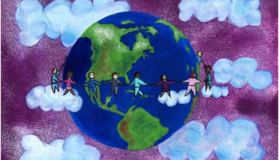1. Defintion
Intercultural adaptation refers to the process of increasing our level of fitness to meet the demands of a new cultural environment.
2. Stages and charateristics
(1) Honeymoon period: charaterized by fascination with the new culture and by the excitement about all the new things we encounter in the host culture.
(2) Crisis period: During this period, a person experiences what is called culture shock. This stage is charaterized by frequent confusion and disintegration as we confront differences in values, beliefs, behaviors and lifestyles.
(3) Adjustment period: this period is referred to as the adjustment period or the recovery stage, during which sojourners also begin to appreciate and respect the new culture and to develop sensitivity toward cultural differences.
(4) Biculturalism period: this stage is marked by attitudes and behaviors that are independent from the influence of our birth.


